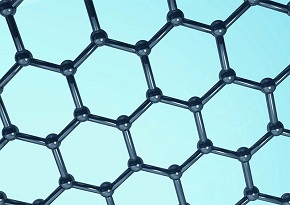Graphene in civil engineering
Contents |
[edit] Introduction
Scientists at the University of Manchester first isolated flakes of graphene in 2004, winning them a Nobel prize in physics 6 years later. The many superlative properties of the material have led to thousands of scientific publications and patents every year in this new and exciting area of research.
Graphene is a one-atom-thick honeycomb of carbon atoms with world-beating mechanical, thermal, optical and electrical properties. It has already been used for flexible electronics, energy storage, nanocomposites, sensors, liquid filtration and thermal management.
[edit] Construction applications
UK companies are now developing commercial applications of graphene for civil engineering. For example, Graphitene Ltd is currently developing thermally conductive cement grout materials containing graphene for geothermal wells, as well as cements with graphene admixtures that are mechanically stronger.
The company is also working on improving asphalt with graphene, both for more thermally resistant and durable roads, with increased elastic recovery and reduced cracking, and for fire-resistant bitumen roof materials.
Meanwhile, Haydale Composite Solutions Ltd has announced production of graphene-enhanced, electrically-conductive, carbon fibre reinforced, composite materials with improved resistance to damage from lightning strikes. This has already been incorporated into an aileron designed by Airbus and could soon be used for wind-turbine blades.
[edit] Supply chain concerns
However, while the future is bright for this 2D carbon material, it is not without challenges. One of the crucial barriers to real-world applications is lack of confidence in the supply chain.
It is common for companies which want to develop graphene-enabled products to struggle to find a reliable source of material from graphene suppliers. This is due to batch-to-batch variability, an issue that can be amplified by the fact that neither the supplier nor end-user really knows the physical or chemical properties of the material supplied.
The problem is because commercially available graphene, from the hundreds of suppliers world-wide, is typically a black powder or liquid containing flakes of one or a few layers graphene, as well as graphite. Measuring a statistically representative amount of nanoscale flakes for every part of every batch of material that can be produced on the tonne-scale is extremely difficult. Similarly, there are no standardised measurement procedures for doing this and so no well-defined quality control techniques exist.
[edit] New standard and guide
The issue is being addressed through work at the National Physical Laboratory (NPL), the UK's national measurement institute, which has developed the first international graphene standard on terminology within the International Organization for Standardization (ISO, 2017). This is an important first step in allowing different parts of the graphene supply chain to communicate what type of graphene they require.
Furthermore, we have now released a good practice guide entitled Characterisation of the structure of graphene in partnership with the National Graphene Institute at the University of Manchester, which will form the basis for future ISO measurement standards (NPL, 2017). This enables end-users to compare the properties of commercial graphene that have been measured in the same, reliable and accurate way.
It is hoped that through this work, more graphene-enabled products will soon come to market in many different application areas.
This article was originally published here by ICE on 15 January 2018. It was written by Andrew Pollard.
--The Institution of Civil Engineers
[edit] Related articles on Designing Buildings Wiki
Featured articles and news
The benefits of engaging with insulation manufacturers
When considering ground floor constructions.
Lighting Industry endorses Blueprint for Electrification
The Lighting Industry Association fully supports the ECA Blueprint as a timely, urgent call to action.
BSRIA Sentinel Clerk of Works Training Case Study
Strengthening expertise to enhance service delivery with integrated cutting-edge industry knowledge.
Impact report from the Supply Chain Sustainability School
Free sustainability skills, training and support delivered to thousands of UK companies to help cut carbon.
The Building Safety Forum at the Installershow 2025
With speakers confirmed for 24 June as part of Building Safety Week.
The UK’s largest air pollution campaign.
Future Homes Standard, now includes solar, but what else?
Will the new standard, due to in the Autumn, go far enough in terms of performance ?
BSRIA Briefing: Cleaner Air, Better tomorrow
A look back at issues relating to inside and outside air quality, discussed during the BSRIA briefing in 2023.
Restoring Abbotsford's hothouse
Bringing the writer Walter Scott's garden to life.
Reflections on the spending review with CIAT.
Retired firefighter cycles world to raise Grenfell funds
Leaving on 14 June 2025 Stephen will raise money for youth and schools through the Grenfell Foundation.
Key points for construction at a glance with industry reactions.
Functionality, visibility and sustainability
The simpler approach to specification.
Architects, architecture, buildings, and inspiration in film
The close ties between makers and the movies, with our long list of suggested viewing.
SELECT three-point plan for action issued to MSPs
Call for Scottish regulation, green skills and recognition of electrotechnical industry as part of a manifesto for Scottish Parliamentary elections.
UCEM becomes the University of the Built Environment
Major milestone in its 106-year history, follows recent merger with London School of Architecture (LSE).
Professional practical experience for Architects in training
The long process to transform the nature of education and professional practical experience in the Architecture profession following recent reports.
























